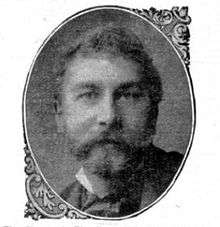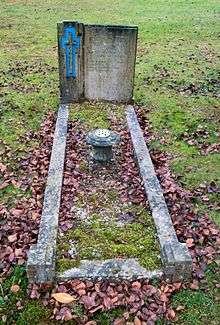Willy Clarkson


William Berry "Willy" Clarkson (1861 - 12 October 1934)[1] was a theatrical costume designer and wigmaker.
A 1900 article in the theatrical newspaper The Era stated that "Not to know Willy Clarkson and his doings is to be out of the theatrical world, for Willy Clarkson, with the bright and easy (though sometimes anxious) manner is ever hovering "before and behind." Scarcely any big production in London to undertaken without the aid of the owner of the Wellington-street wiggeries."[2]
Clarkson's father had been making wigs since 1833 and Willy Clarkson took over his father's business in 1878.[2] In an 1898 court case Clarkson was fined for the offence of employing women in a factory on a Sunday.[2] Author James Morton described Clarkson as "the more notorious of Soho's blackmailers of the interwar years" in his 2012 book Gangland Soho.[1] Morton describes a public lavatory in Soho's Dansey Place as being known locally as Clarkson's Cottage, and wrote that Clarkson was an accomplished insurance fraudster, with 11 of 12 premises Clarkson occupied having burnt down.[1]
Willy Clarkson drafted his will himself and did not leave the residue of his estate to any particular person. This meant that upon his death his estate would have been forfeit to the crown. A solicitor's clerk, William C. Hobbs, then forged Clarkson's will in his favour with the help of lawyer Edmond O'Connor.[1] Hobbes was later sentenced to five years in prison for this crime and O'Connor seven.[1]
A London County Council blue plaque unveiled in 1966 commemorates Clarkson at 41-43 Wardour Street in Soho.[3] The foundation stone of Clarkson's Wardour Street premises (then Wellington Street) was laid by the actress Sarah Bernhardt and the coping stone by actor Henry Irving.[4] Clarkson's occupied the building from 1905 to 1940.[5]
Harry J. Greenwall published The Strange Life of Willy Clarkson: An Experiment in Biography in 1936.[6]
Disguises
Clarkson was reputed to have created disguises for murderers Hawley Harvey Crippen and Jack the Ripper.[7] Clarkson would also make disguises for detectives from Scotland Yard.[2] In 1936 Adrian Stephen recalled that Clarkson had helped disguise the members of Horace de Vere Cole's Dreadnought hoax in 1910. Among the hoaxers was a young Virginia Woolf, disguised as a member of an Abyssinian royal delegation.[8]
Clarkson's ability at creating disguises is referenced in novels by Sax Rohmer (The Golden Scorpion, 1919) and Graham Seton Hutchison (Colonel Grant's To-morrow, 1931).[9][10]
References
- 1 2 3 4 5 James Morton (1 March 2012). Gangland Soho. Little, Brown Book Group. pp. 80–. ISBN 978-1-4055-1559-7. Retrieved 19 August 2012.
- 1 2 3 4 "Clarkson's Wigs, Wellington Street, London". Arthur Lloyd. Retrieved 2012-08-18.
- ↑ "CLARKSON, WILLY (1861-1934)". English Heritage. Retrieved 2012-08-18.
- ↑ Christopher Hibbert Ben Weinreb; John & Julia Keay (9 May 2011). The London Encyclopaedia (3rd Edition). Pan Macmillan. pp. 984–. ISBN 978-0-230-73878-2. Retrieved 19 August 2012.
- ↑ "Rupert Street Area". British History Online. Retrieved 2012-08-18.
- ↑ Library of Congress. Copyright Office (1937). Catalog of Copyright Entries. Part 1. [A] Group 1. Books. New Series. pp. 299–. Retrieved 19 August 2012.
- ↑ "Stephen Fry: the joy of plaques". The Telegraph. 2009-06-09. Retrieved 2012-08-18.
- ↑ Stanford Patrick Rosenbaum (1995). The Bloomsbury Group: A Collection of Memoirs and Commentary. University of Toronto Press. pp. 7–. ISBN 978-0-8020-7640-3. Retrieved 19 August 2012.
- ↑ Sax Rohmer (March 2009). The Golden Scorpion. Wildside Press LLC. pp. 220–. ISBN 978-1-4344-5106-4. Retrieved 19 August 2012.
- ↑ Graham Seton Hutchison. Colonel Grant's To-morrow. Taylor & Francis. pp. 59–. Retrieved 19 August 2012.